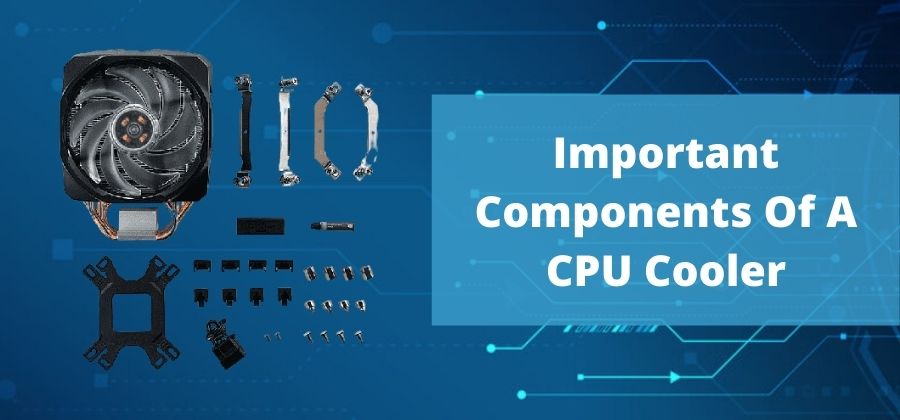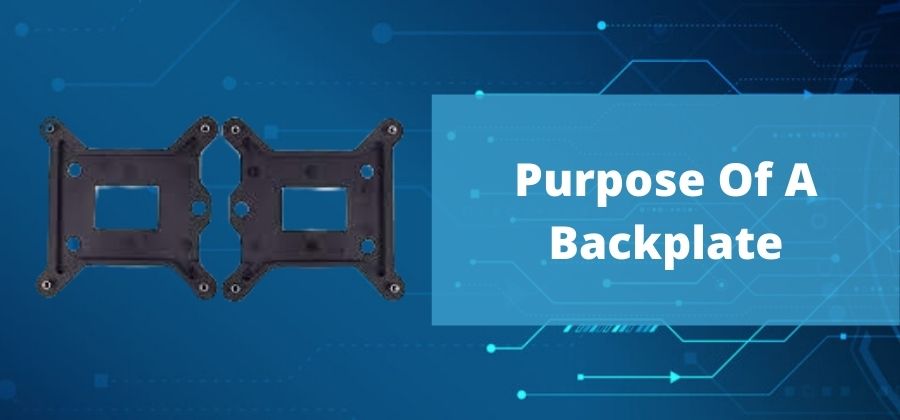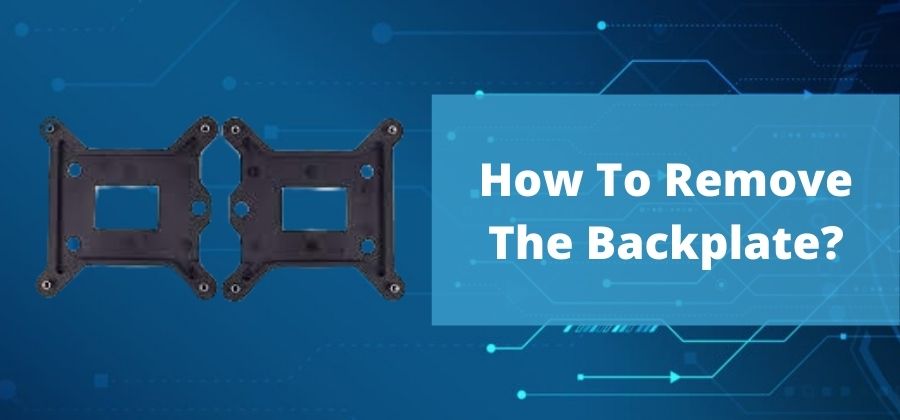So last week you ordered a CPU cooler but guess what it came without a backplate? No, you don’t have to return it! Neither it is a faulty CPU cooler. Now you must be thinking that we are kidding or something. But we are not. You can have your CPU cooler even without a backplate. But is that even possible? Does a CPU cooler actually needs a backplate?
Can a CPU cooler function without a backplate? No need to stress yourself further as we are going to answer every of your questions. Keep on reading to know all about the backplate of a CPU cooler and how your CPU cooler also work without it. So without wasting time let’s dive into it!
How To Install CPU Cooler Without Backplate?
In case your cooler doesn’t come with a backplate, you’ll need to use a little trick to get it to fit in. The trick is to use one of the cooler’s mounting holes as the backplate’s one. You will need a long screw to do this. Place the screw through one of the mounting holes and then place the cooler over it. Then, place the other end into the CPU socket.
This way, the screw will keep the cooler in place. It’s a little bit complicated, but it works. The only odd thing here is that you can’t move the cooler around once it’s installed. You have to put it in the perfect spot. If you ever need to move it, you’ll have to uninstall it, put it in the new spot, and then reinstall it. This is a weird one, but it’s also not really a big deal.
Do I Really Need To Buy A CPU Cooler?
The short answer is yes, you do need to purchase a CPU cooler for your computer. In fact, almost all computer purchased from the major computer retailers come with a CPU cooler. The CPU is the brain of your computer and it generates a lot of heat. CPU heat is one of the biggest problems that PC enthusiasts have had to deal with over the past few years.
Many of us have dealt with overclocked CPUs that can get pretty hot. This has led to a lot of people deciding to just buy an aftermarket CPU cooler, or even a liquid cooling system. But do you really need to purchase one? In a nutshell, the answer is yes. However, you will have to do some work to get the most out of them. The good news is that the cooler will make your system run quieter and cooler.
What Are The Important Components Of A CPU Cooler?
CPU cooling is an important component of any system. As the name suggests, a CPU cooler is used to dissipate heat generated by your processor. Without adequate cooling, your processor may overheat, which could damage it. There are, in fact, a few different components to a CPU cooler.

The Fins
These are what give the entire structure its shape and allow for the heat to be dissipated. These are usually very thin pieces of metal, but they are very important to the function of the cooler. These are what give the entire structure its shape and allow for the heat to be dissipated.
The Thermal Pad
The thermal pad is used to help transfer the heat from the fins to the rest of the cooler. It works by having a layer of thermal paste applied to it, which then transfers the heat from the fins to the cooler itself. This is often a thin layer of thermal compound that is applied to the cooler.
The Backplate
The base plate is what attaches everything else to your motherboard. It can either be an aluminium or plastic piece. It has holes in it for the fan to mount to. These are usually threaded. The top side is where the fan mounts to. The Fan: The fan is what moves the air over the fins and heatsink. You will need a fan with enough airflow to cool your processor.
The Heatsink
The heatsink is a metal block that is attached to the bottom of the processor. There are cold plates that spread the heat from the processor over a large area.
The Heatpipes:
Heatpipes are basically small pipes that are attached to the heatsink and the fan. Heatpipes are made out of metal and they are filled with some sort of oil. The Heatpipes are covered with a thin layer of fins that channel the air that is being moved by the fan, across the heatpipes to the other side of the heatsink.
What Is The Purpose Of A Backplate?
A backplate is a metal plate that sits behind the main heat spreader and heatsink fins to provide extra stability. The purpose of the backplate is to prevent the motherboard from flexing under heavy CPU load, which could cause damage to the processor socket or motherboard itself.

It also reduces the risk of the motherboard being damaged when lifting the processor out of its socket. The backplate can be removed for users who want to replace the heatsink, but the majority of people don’t remove the backplate and use a thermal compound on top of the heat spreader.
Backplates come in different shapes and sizes, depending on what kind of motherboard you have. Many of them also come with a thermal compound to help with heat transfer.
Can I Remove The Backplate From My CPU?
Many motherboards come with a backplate. This is used to help dissipate the heat of the motherboard’s integrated components. You can remove the backplate from your CPU if you wish.
The CPU back plate is not an integral part of the motherboard and can be removed without any special tools. Yes. It takes a bit of effort and patience, but it is not too difficult to remove the stock backplate from most processors. However we have explained the whole process in the next section so keep on reading.
How To Remove The Backplate?

The backplate is the outer casing of the CPU. The backplate is usually held in place using screws or clips, or it may be attached using thermal tape. To remove the backplate, you will need to remove the CPU cooler. While this might seem like a simple process, getting the backplate off is a bit more complicated.
This is because you need to remove the cooler, the top of the motherboard, the I/O shield, the motherboard standoffs, and the motherboard itself. We recommend taking a before picture of the back of your motherboard to help with the reinstallation of the components. The backplate is mounted using four screws. The backplate will remain attached to the motherboard, you only need to remove the four screws to separate the two.
Can A CPU Cooler Work Without A Backplate?
Yes, you can use CPU cooler without a backplate. Nowadays, a lot of CPU coolers have come a long way since then. Most of them can work just fine without a backplate.
However, if you have a cooler that comes with one, it’s a good idea to use it. It will help to improve thermal conductivity, offering better temperatures and a longer lifespan for your CPU.
Back in the day, CPU coolers were mostly designed to be used with a solid, metal backplate. While a lot of people used these to keep their CPU from touching the motherboard, this also meant that there was no way for heat to get out.
Is It Dangerous To Use A CPU Cooler Without A Backplate?
No, it’s not dangerous. However, if you’re worried about the risk of damaging your motherboard, you can buy a separate backplate, which will make it easier to fit the cooler on your processor. Honestly speaking the majority of people use them with the backplate.
The reason is because it’s a lot easier to get the two pieces of metal together and attach them than it is to try and do it without the backplate. On top of that, the backplate helps prevent the metal from bending. Of course, if you do bend it, you can always just fix it back, but it’s better to prevent it from happening.
Do Stock Coolers Come With A Backplate?
Yes, all stock CPU coolers come with a backplate pre-installed. You may be wondering, though, if you should remove the stock backplate and replace it with a different one.
The answer is a definitive no. While some CPU coolers use an all-in-one mounting system, most use a separate bracket and backplate. Because the backplate is typically made of metal, it helps to conduct heat away from the CPU.
Backplate Or No Backplate What Works Best With A CPU Cooler?
Many people are wondering whether they should get a backplate or not. Well, from our extensive research we conclude that it is not that important. But as a matter of fact, we would always recommend to go for a backplate. There are three reasons for that.
First, it is a solid piece of metal, so it is always good to have extra strength in a computer. Second, it is a good idea for thermal cooling, so it is better for your components. And third, it helps with the aesthetics of the computer.
Additionally, the backplate is used to stabilize the CPU cooler and prevent the motherboard from getting scratched. When the backplate is used, there is also no need for a frame as the backplate itself is the frame.
Conclusion
To sum it up a CPU cooler work wonder to say goodbye to that extra heat and make your system run efficiently. In case if you don’t have a backplate with your CPU cooler you can install it using the quick fix mentioned in our article.
Besides also keep in mind that what will be the probable cases you have to go through if the backplate is missing. Hopefully we have answered every query of yours about how to install CPU cooler without a backplate. So, What are you waiting for? Get up and install the CPU cooler and gift your system a new life. Best of luck!